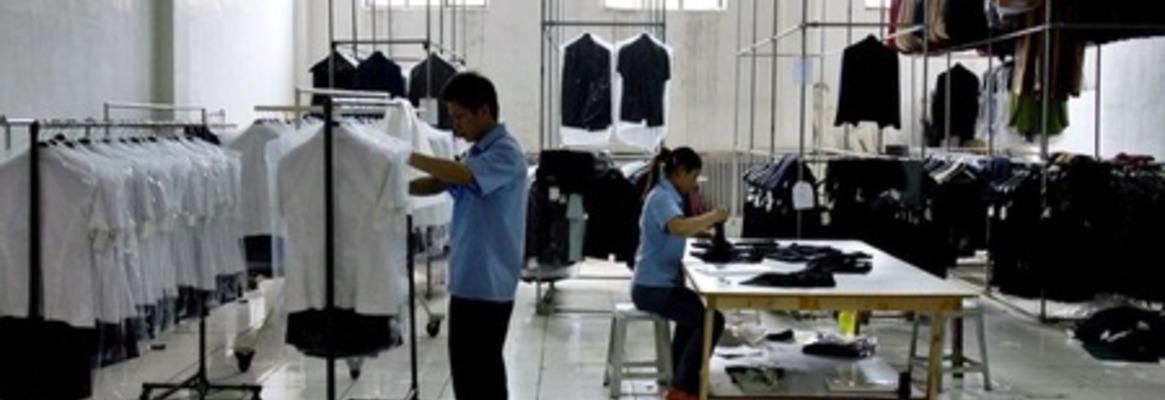It is clear that selecting the right clothing factory for your new collections is critical to a successful brand in terms of efficient production processes and also brand identity. The choice of clothing factories across the globe is dizzying, so it is important to take time to research well.
Initially, you will want to ask yourself the following questions: what do you hope to create, in what quantity, and with what requirements? Having a big picture brand plan is crucial before you begin researching clothing factory options. With that in mind, let’s work through some key factors to consider in finding the right clothing factory for your brand.
Do they have experience working on similar projects to yours?
Ask to see evidence, so you can get a clear idea if they are a good fit for your business.
Do they specialise in the type of garment that you wish to manufacture?
Choosing a factory that has knowledge of your niche and that understands your ideas will greatly smooth out the manufacturing process. They will also generally have specialised equipment and tools to produce the garments you require to a high quality.
What are the minimum order quantities (MOQs)?
Individual factories will have various minimums that will impact the cost of your final product. Determining the quantities you will need for each garment style is also imperative, as these MOQs are generally dependent on the type and not the total number of different garments you need to produce.
What production processes do you need?
You will have to decipher whether you need a full-service package from start to finish (known as FPP or full package production), or if you will have everything ready to take your clothing straight to manufacturing (CMT or cut, make, trim). The former is great for fashion brands just starting out, however, the latter is a more cost-effective option and gives you greater control over the final product.
Can your supplier grow with you?
Whilst it’s impossible to forecast exactly how much your business will grow, it is important to evaluate at least how much you would like to grow so that you can choose a factory that could scale to your growth. In the beginning, this may not be a decisive factor in choosing a supplier, as establishing your brand is often the most fundamental starting point. However, if you expand expeditiously, choosing a manufacturer that can grow with you will be necessary for a smooth and uncomplicated transition.

Does the clothing factory mirror your brand ethics?
In recent years, brand ethics has become increasingly focused on transparency - accounting for sustainability, being open about your manufacturing processes, and ensuring your customers that the people who make your clothes are treated fairly. This is especially the case for fashion brands that have built a strong following for providing eco-conscious clothing. Finding an eco-conscious clothing manufacturer will ensure your clothing is produced within your brand standards. To determine suitability, check whether the factory holds any ‘green’ certificates, how they source their fabrics, what their labour standards are, and what steps they take to reduce their carbon footprint.

How do their samples look?
The best way to check production quality is by asking to see some samples, preferably in the fabric and design that you intend to produce. Pay attention to details such as:
• Stitching – check the quality of the stitching and the durability of stitches by giving a tug
• Embroidery or embellishment – check any detailing is stitched securely to the garment
• Sleeves and collar– check sleeves and collar are even and the same length
• Inside seams – check the quality is just as good on the inside seams as the outside
Will you use domestic vs overseas clothing manufacturers?
A typical question when looking for suppliers is whether you want to source domestically or from overseas. Overseas can refer to any location overseas but commonly India, China, and Taiwan. Both domestic and overseas sourcing have their advantages, as well as disadvantages.
Domestic advantages include:
• Typically higher manufacturing quality
• Typically higher standards for employees
• Easy clear communication
• Similar time zones
• Faster shipping times
• Cheaper shipping costs
• No import duties or tariffs
However, domestic manufacturing is not without its disadvantages too. These include:
• Higher manufacturing costs
• A smaller choice of potential factories
Overseas advantages are in fact the opposite of domestic disadvantages! They include:
• Lower manufacturing costs
• A larger number of factories to choose from
The disadvantages of overseas factories include:
• Can be a lower quality depending on factory used
• Typically lower manufacturing and labour standards
• Import and custom taxes to pay
Potential language and communication difficulties
• Differences in time zones
• Cultural differences in negotiating and schedules
• More costly to visit the factory
• Longer shipping times
• Higher shipping costs
Where to look for a manufacturer?
Directories
Several legitimate directories have done a great job of consolidating manufacturer profiles.
Searching Google is a great way to find clothing manufacturing companies if you’re willing to dig deep and spend time to find them.
Tradeshows
Tradeshows are a goldmine for finding and vetting potential manufacturing partners and there’s no lack of tradeshows in the fashion and clothing sector.
This article has not been edited by Fibre2Fashion staff and is re-published with permission from synzenbe.com








Comments